At a Glance
The client, a leading life insurance provider, needed to manage a projected tenfold increase in agents to boost sales, which threatened to overwhelm administrative staff and training capacity, leading to an unsustainable cost-to-serve ratio.
This case study underscores how Renoir’s engagement achieved a 31% productivity increase and 37 process automations, significantly improving resource capacity.
Key results
productivity increase in middle and back-office areas.
31%
Number of process automations implemented, that improved resource capacity.
37
Established a new working culture that empowers teams to plan resources and solve problems to achieve targets
Background
The client is one of the leading life insurance providers in Indonesia. Committed to innovation and customer-centric solutions, the client continuously seeks to enhance service delivery and expand its reach in the competitive Indonesian market through strategic initiatives, including strengthening its agency channel.
Analysis
The client aimed for substantial growth in insurance sales through its agency channel. The strategy required a tenfold increase in agents over five years. This rapid expansion created challenges, including increased administration and new training requirements. The surge in complexity was expected to strain staff, leading to an uncompetitive and unsustainable cost-to-serve ratio.
To address inefficiencies and strengthen operational performance, the client engaged Renoir to conduct a comprehensive review of its Agency Operations. The objective was to improve process efficiency, enhance leadership and performance management capabilities, and optimise labour costs.
Key Findings from Renoir’s Analysis:
- Excessive manual administrative tasks during agent onboarding.
- Dependence on static, manual reports lacking automation and visualisation.
- High frequency of unproductive meetings.
- Absence of short interval control systems for real-time performance tracking.
- Limited adoption of continuous improvement behaviours.
- Lack of detailed volume driver forecasts despite high-level forecasting, leading to planning inefficiencies and overstaffing.
- No formal daily or weekly performance tracking, obscuring operational inefficiencies.
- Weak accountability and empowerment among supervisors, affecting cost control and service quality.
Renoir’s structured approach enabled the identification of targeted improvement areas across process efficiency, leadership control, and workforce productivity.
.

Workforce productivity peaks with clarified role definitions

Webbing Maker: 30% Waste Reduction. Better Quality Product

Workforce productivity peaks with clarified role definitions

Webbing Maker: 30% Waste Reduction. Better Quality Product
Ready for a change in your organisation?
Project Approach
Engagement Overview
Duration: 8 months
Renoir Team: 6 consultants
Client Taskforce: 4 full-time members
Scope: 12 Agency Operations functions
Functions Covered
Strategic Planning
Data Analytics
Marketing & Digital
Helpdesk
Sales Administrative Support
Risk Management
Quality Assurance
Agent Training
Onboarding
Account Management
Governance Structure
Level | Frequency | Purpose |
Management Action Teams | Weekly | Review progress and implementation across functions |
Updates to Agency Director | Weekly | Maintain operational alignment and responsiveness |
Senior Management Reviews (C-suite) | Monthly | Track strategic progress and ensure delivery of project milestones |
Methodology Highlights
Process Mapping: Detailed process maps were developed for each function to identify inefficiencies and improvement areas.
Collaborative Implementation: Renoir worked side-by-side with internal teams to drive ownership and capability-building.
Performance-Driven Planning: All initiatives were aligned with a structured Project Deliverables Schedule to ensure accountability.
“The project exceeded my expectations in terms of process improvement, people development and financial benefit. While the financial benefit is great, I am most pleased with the staff development that will continue to pay dividends for years to come.”
– Regional Vice President
Implementation
A fundamental aspect of the implementation was addressing the lack of Standard Operating Procedures (SOPs), which contributed to duplicated efforts and inconsistent practice. Renoir collaborated closely with the client’s teams to document, agree upon, and implement new SOPs across all areas.
Here is the snapshot of the implementation process:
Driving Automation
Opportunities Identified: 96 process areas flagged for automation.
Outcomes:
37 automation initiatives fully implemented during the project.
Remaining initiatives clearly defined and scheduled for future rollout.
Enhancing Planning & Forecasting
Challenge: Absence of granular volume driver forecasts hindered resource planning.
Solution:
- Custom forecasting models and work plans were developed.
- Results: Improved cost efficiency and service performance.
Optimising Labour
Action: Introduced Crewing Master Schedules to align staffing with workload demand.
Impact: Reduced overstaffing and optimised workforce deployment.
Building Leadership Capability
Delivered: Practical training sessions for supervisors and managers.
Focus: How to apply new Management Control Systems (MCS) effectively in daily operations.
Developing Workforce Capability
Action: Catalogued staff skillsets to enable targeted upskilling and smarter recruitment.
Impact: Strengthened workforce alignment to future operational needs.
Sustaining Improvements
Continuous Improvement Training: Equipped key personnel with CI methodologies.
Behavioural Auditing System: Implemented to ensure long-term compliance and embed a culture of accountability.
Results
- The engagement significantly exceeded the initial target of freeing up 20% spare labour capacity, achieving a 31% productivity increase for middle and back-office areas.
- The project identified substantial additional productivity potential through programmed digitisation initiatives and organisational restructures planned.
- A benefits capture schedule was developed to outline where future people, process, and IT system initiatives would yield further advantages.
- From a management perspective, there was a notable increase in the visibility of performance across all Agency areas, leading to more proactive supervision and enhanced problem-solving capabilities.
- Customer service improved significantly, and critical cost-to-serve metrics showed a sharp downward trend by the project’s end.
- Sustainable behavioural change was evident throughout the organisation, with Renoir’s behavioural audit tracking systems ensuring compliance, understanding, and ownership of the new frameworks.
- The implemented process automations greatly improved resource capacity.
- The newly established working culture empowered teams to effectively plan resources and proactively solve problems to achieve their target.
*Client-specific details have been intentionally omitted to maintain strict discretion.
Facing challenges related to operational efficiency and scaling growth?









